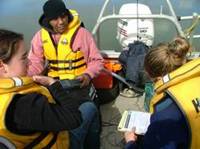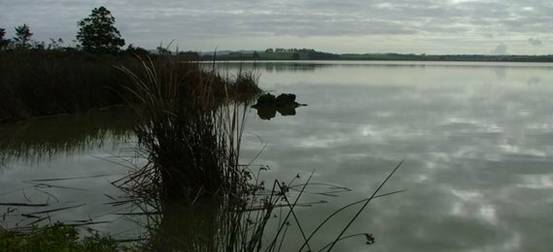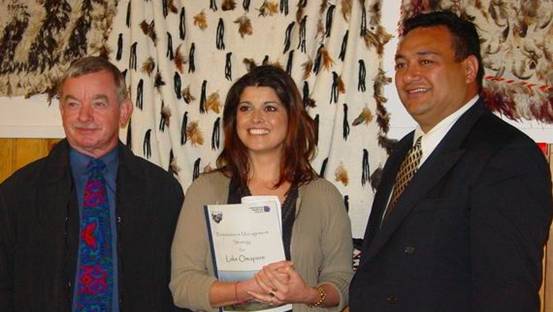18.7 Case study 1:Lake Omapere Management Project
The aim of the Lake Omapere Restoration and Management Project was to develop and implement a voluntary lake management strategy that works towards improving the health of the lake and help establish the Lake Omapere Trustees in their role as kaitiakitanga.
The project had six major components, including:
· Development of a Lake Management Strategy
· Assist the Lake Trustees in their role as aitiakitanga
·  Integrated catchment management
Integrated catchment management
· Water quality monitoring
· Development of a weed management programme
· Enhancement of indigenous biodiversity
The project includes ongoing community involvement to identify the issues affecting the lake and develop and work towards a goal for the future of the lake.
This project was a joint initiative between the Lake Omapere Trustees and the Northland Regional Council, and was funded by the Ministry for the Environment's Sustainable Management Fund. Other key stakeholders who were involved include landowners in the lake catchment, local iwi and hapu, Far North District Council, Department of Conservation, local schools and the local community.
Restoration and Management Strategy for Lake Omapere
The Lake Omapere Trustees and the Northland Regional Council prepared a joint management strategy for Lake Omapere and its wider catchment. The Trust's and the Council's Chairmen formally signed the ‘Restoration and Management Strategy for Lake Omapere' on 29 September 2006, at a ceremony held at the Parawhenua Marae near the lake.

Tiakina a Ranginui raua ko Papatuanuku kia a ora te mauri o nga taonga tuku iho
If you look after the lake, it will look after you
The document is a management strategy that works towards improving the health of Lake Omapere while re-establishing the role of the Lake Trustees as kaitiaki. It is envisaged that if water quality in the lake can be improved other flow-on benefits and purposes will result in time, for example, improved biodiversity or opportunities for economic development and use of the lake.
Issues, visions and aims for the future of the lake were sought at hui, public meetings and through one-on-one meetings with adjoining landowners. These issues, visions and aims were incorporated into the strategy, and long term actions to address these are also being developed. Actions such as aquatic weed management, integrated catchment management programmes, environmental farm plans, as well as biodiversity enhancement and water quality sampling are some of the tools that will be used.

Photograph (left to right): Mark Farnsworth (Chairman of Northland Regional Council), Amanda Turner (Ministry for the Environment) and Mike Kellihar (Chairman on Lake Omapere Trust at signing ceremony.
Other components of project
Significant efforts in integrated catchment management including farm and nutrient management plans, fencing, seed collection/propagation and planting. The Lake Omapere Trustees and local iwi have been intensively involved in this entire process. For more information refer to Case study 1 of the Land and Soils chapter.
There have also been many other components of this project, with Tangata Whenua also involved in research into and monitoring of freshwater mussels and fish populations in the lake, water quality monitoring and aquatic weeds surveys.
Future work
The Lake Omapere Trust and the Council will continue to work together on the restoration and management of Lake Omapere in the future through implementation of this strategy. This includes reviewing the strategy annually, ongoing water quality monitoring and information gathering, and ongoing restoration work in the catchment, such as fencing, planting and seed collection and propagation.
